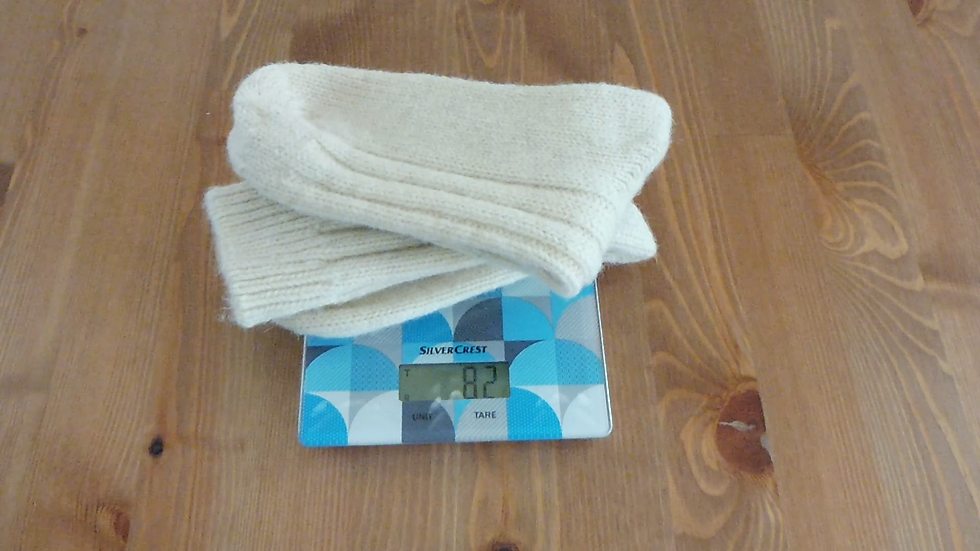One of the most asked questions I received about natural dyeing is: Will the colour go away?
The answer is not an easy one, because the colour fastness depends on different factors. One thing is for sure, to have a long-lasting and bright colour you need to mordant the fabric properly.

They are different types of mordant methods depending on the fibre you are using and the final result you want to achieve.
Here I'm going to explain the process that I used to mordant Protein fibres, like wool.
(If you are not sure what type of fibre you have, check this video)
Note before we continued:
Protein fibres like wool and silk don't tolerate sudden changes in temperature, so don't pour very hot or cold water straight into the animal fibres.
Mordanting animal fibres.
We are going to need:
A wool fabric or yarn, I'm going to use a pair of raw wool sock.
10 % of the WOF in Potassium alum salt ( click here to buy it )
5% of WOF in Cream tartar
A stain-steel pot. Big enough to allow the fabric to move inside.
A wooden spoon
A kitchen scale
A Glass jar (like the jams one)
Facemask and gloves
*WOF = Weight Of Fabric.
Remember to weigh the fabric before washing it.
Where to find potassium alum and cream of tartar?

Step 1
First, we are going to clean and scour the fabric. I used a neutral powder soap and warm water and let it rest overnight.
The next day I wash the excess soap with lukewarm water.
Step 2
Fill the stain-steel pot with enough water to cover the fabric and put it on the hob, but don't turn it on yet.
Step 3
Dissolve the cream tartar on a glass jar, stir well, and add the mix to the pot.
Weight of the fabric: 80 g Cream of tartar 5% WOF
80g x 5% = 400
400g / 100% = 4 g

Do the same with the crystal alums (potassium alum), and add them to the stain-steel pot. Mix with a wooden spoon until the water is clear again.
Weight of the fabric: 80 g Potassium alum 10% WOF
80g x 10% = 800
800g / 100% = 8 g


Step 4
Add the wet fabric and turn on the heat, let it arrive to simmer point slowly.

Step 5
Simmer for one hour gently mixing and making sure all the fabric is submerged.
After one hour remove it from the heat and let it cold overnight. ( or at least 2 hours)

Step 6
The next day, remove the fabric from the pot and rinse it carefully.
After that, the fabric is ready to be placed in a dye bath immediately or can be dried and saved to use later.

Where to find potassium alum and cream of tartar?

This post may contain affiliate links, which means that I may receive a commission if you make a purchase using these links, this helps me to continue creating inspiring content for CasaCaribe.
Comments